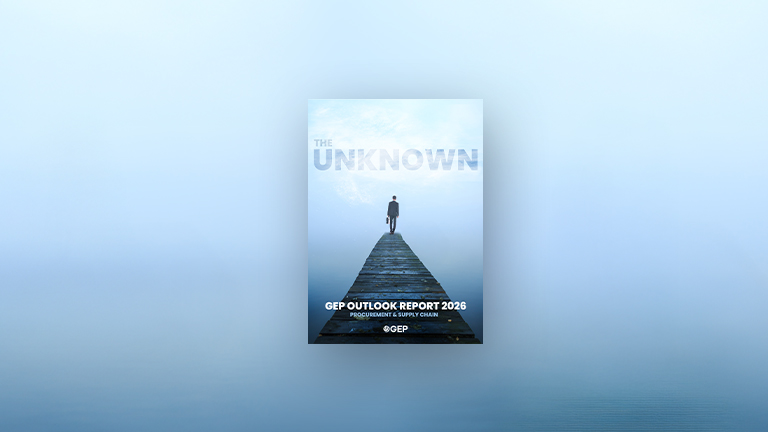
Procure-to-Pay Best Practices to Improve Your Process
- P2P excellence starts with alignment—finance and procurement must share a live, unified view of spend.
- Automation and clean supplier data aren’t upgrades—they’re foundational to scale, speed and control.
- Real-time, embedded analytics drive smarter decisions where it matters most: in the flow of work.
August 12, 2025 | Procurement Software 4 minutes read
Is Your P2P Process Driving Value - or Just Pushing Paper?
Most organizations think their procure-to-pay workflow is under control. But hidden costs, rogue spend, and friction between procurement and finance tell a different story. The gap between “automated” and “optimized” is where millions leak out. If you're still relying on generic solutions or baseline controls, it’s time for a sharper edge.
This isn’t about what P2P should look like. You already know that. This is about what high-performance procurement teams do differently—every single day. Let’s get into the five best practices that separate process maturity from process chaos.
1. Align Procurement and Finance Around a Common Goal
Procurement wants control. Finance wants compliance. The tension is baked in—but top performers harmonize both functions under one common goal: spend visibility that drives better decisions.
This goes beyond monthly reporting. It’s about creating a unified data environment where both sides access the same real-time view of budgets, commitments, and forecasts. A shared dashboard isn’t a luxury—it’s a basic operating standard.
Pro tip: Organizations that build this alignment into the core of their procurement platforms consistently see faster approvals, fewer exceptions, and a dramatic drop in invoice discrepancies. When procurement and finance pull insights from the same source of truth, friction drops and strategic clarity rises.
2. Have You Replaced Manual Touches Yet?
Here’s the truth: if someone still has to manually match a PO to an invoice, you’re bleeding efficiency. Automation is no longer a best practice - it’s a baseline.
But it’s not just about digitizing paperwork. The leaders in this space implement intelligent workflows that enforce policy without adding friction. Think automatic 3-way matching, dynamic approval chains, and spend thresholds embedded directly into the process—not tacked on after the fact.
AI also has a place here—not to replace people, but to catch exceptions early, surface risk, and flag non-compliant behavior before it reaches finance. The result? Fewer late payments, reduced supplier disputes, and more predictable working capital.
Struggling with Fragmented P2P Processes and Workflows?
Connect the end-to-end process with AI-powered P2P technology
3. Clean and Centralize Supplier Data
Duplicate records. Outdated tax info. Inconsistent naming conventions across business units. These are more than annoyances—they’re silent budget killers.
Leading procurement teams treat supplier master data as a strategic asset. They centralize it within a single platform that integrates across sourcing, contracting, and payments. The data is enriched, validated, and monitored continuously—not just at onboarding.
The benefits compound fast:
- Faster vendor onboarding
- Cleaner compliance audits
- Tighter fraud controls
- Stronger supplier relationships
When your supplier records are clean, searchable, and consistent, sourcing becomes faster, and risk management becomes proactive—not reactive.
4. Build Compliance into the Workflows
Most compliance frameworks are layered on top of P2P workflows like duct tape: restrictive, fragile, and annoying. That’s why users find workarounds. But what if the system itself could encourage the right behavior?
That’s exactly what high-maturity organizations do. They build compliance into the design of the process—not as a guardrail, but as part of the road. Smart defaults, contextual guidance, and embedded controls make it easier to comply than to bypass.
Key features of embedded compliance:
- Pre-approved catalogs to eliminate off-contract spend
- Budget visibility at the point of requisition
- Instant feedback when a request violates policy
- Flexible approval routing based on transaction type
Instead of slowing teams down, compliance becomes frictionless—and that’s when adoption soars.
5. Use Spend Analytics to Shape Behavior in Real Time
Most P2P systems capture plenty of data—but they bury it in static reports or spreadsheets no one opens until quarter-end. That’s not insight. That’s hindsight.
Advanced teams use real-time analytics embedded directly into the P2P lifecycle. The goal isn’t just reporting, it’s behavior change. Preferred supplier prompts. Budget alerts. Category-level benchmarks. These features empower decision-makers to act smarter in the moment, not after the fact.
That also means analytics must be actionable—not just pretty. Drillable dashboards, proactive alerts, and predictive trend analysis should be standard, not premium. And if the insights don’t change decisions, they’re just noise.
The payoff: tighter control, more informed negotiations, and a P2P function that doesn’t just process spend—it drives it strategically.
How Procurement and Finance can Work Together
Understanding the Synergy Between Procurement and Finance to Achieve P2P Excellence
Time to Audit Yourself—Ruthlessly
If reading this raised a few eyebrows internally, that’s a good thing. It means there’s room to tighten the system—and unlock hidden value.
Ask your team:
- Are we automating everything we can, or just what’s easy?
- Do procurement and finance share the same view of our spend landscape?
- Can we trust our supplier data to drive real decisions?
- Is compliance frictionless—or just friction?
- Are we reacting to spend or actively shaping it?
If the answers aren’t a confident “yes,” your P2P process isn’t best-in-class yet. But with the right structure, the right tech stack, and a mindset that favors clarity over complexity, it can be.
Also Read: All You Need to Know to Master the Procure-to-Pay Cycle
Want to sharpen your edge even further?
Start by mapping your existing process against these five best practices. You don’t need a rip-and-replace strategy—just smarter integration, deeper automation, and a commitment to transparency. The best procurement teams don’t chase savings. They build the systems that generate them.



